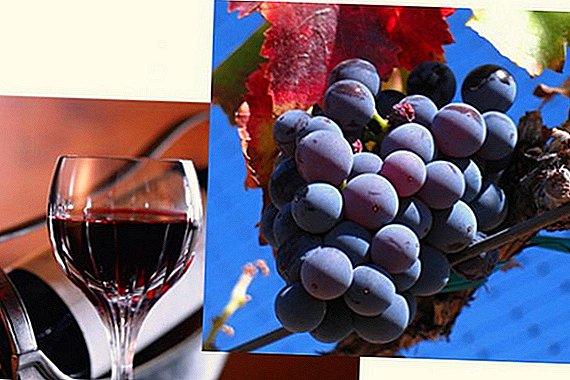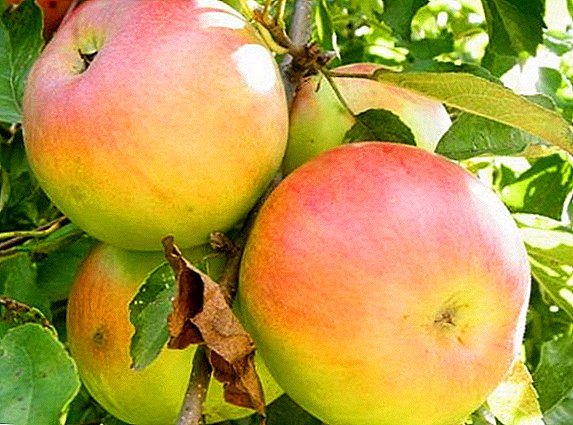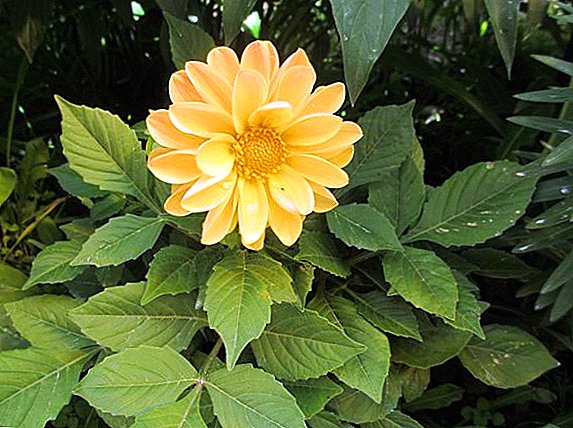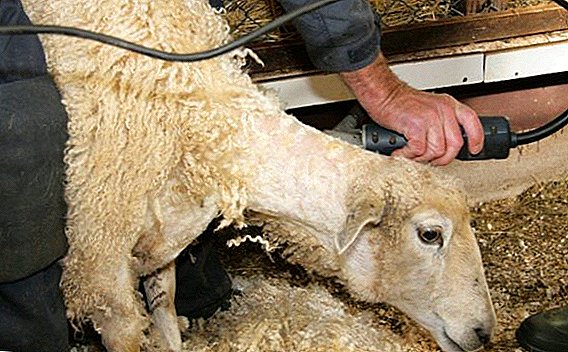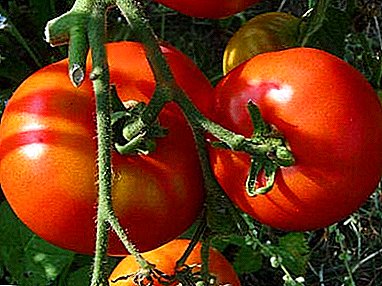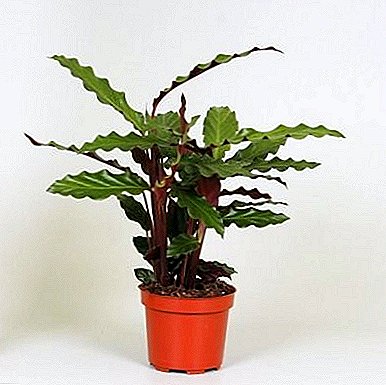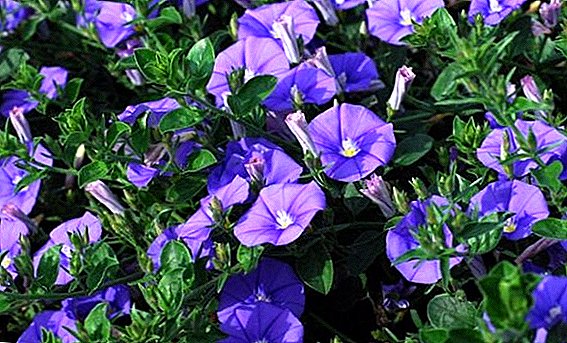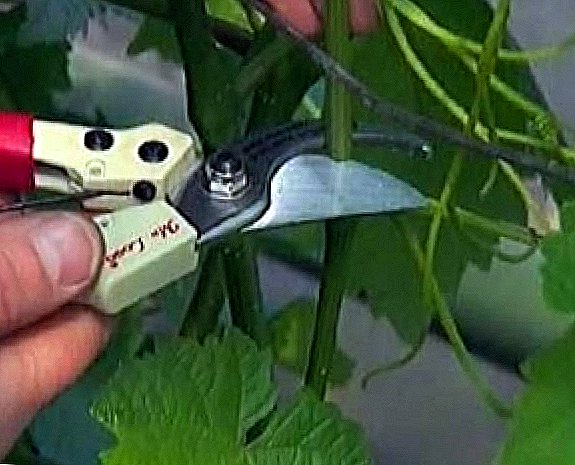
To achieve good growth, high-quality and tasty grape harvest, it is necessary to master some of the rules, varieties, and priorities of pruning this crop. The main thing when pruning a plant is to establish the optimal ratio between the growth of the rhizome and the development of the bush itself, as well as the formation of a fertile crown and its observance throughout the life of a grape plant.
Grapes - a culture that has such a property, which is called polarity. Polarity is a feature in which the growth of grape branches weakens and the buds at the bottom of the bush do not bloom, with only shoots growing on the vine of the last year.
The result of this phenomenon is the elongation of the bush sleeves, the increase in the size of the bush itself, and the rapid increase in distance from the crown to the rhizome.
This leads to a lack of intake of substances needed by the plant. To avoid the occurrence of polarity can, if correctly, every year, cut off the vine of grapes.
Pruning a grape bush performs different tasks, which are determined by the age of the crop, as well as the conditions of its growth. When cutting grapes in the autumn, we simplify its shelter for the period of cold weather, and also warn the "spring crying" of the vine, necessarily arising from spring pruning. It is dangerous because in view of the leaking the buds do not bloom, this results in a poor growth of the bush and its development.
Bezshtambovaya formirovka bush
Any pruning is an artificial intervention in the growth of the grape bush by surgery, in which its living parts are removed. This method determines the number of growing shoots and hrones, which are necessary to regulate the yield and growth, not only of the bush, but also of its individual parts. Development, crop yield and crop growth, stimulated by cutting the vine. This is how the length of the sleeves and their number, as well as the number of knots and vines, are regulated.
Pruning is distinguished by the length of the cutting of the vine, which is measured by the left buds. Vine cut on:
1) short - 4 kidneys,
2) average - 6-8 kidneys,
3) long - 9–18 or more buds.
For the best exposure to sunlight and air, young, 3-4-year-old plant, do skeleton formation. This procedure is still greatly facilitates all subsequent work with the bush. Further, the formed crown must be maintained. This is done by cutting and tying vine branches.
Autumn sometimes pruned bushes that require shelter during the cold season. In the fall, other varieties of grapes can be pruned, but uncircumled grapes tolerate cold better. This type of pruning is still popular in conditions where there is a shortage of heat, and it is also widely used in the northern regions.
Timing
Pruning autumn sometimes recommend carrying out for crop safety. Since the size and quality of the crop does not suffer from this next year. All work is carried out gradually, in two rounds. Before the procedure itself, it should be checked that all the fruits have been gathered, and all the spur-bearing links that are no longer needed by the shrub are torn off.
The cutting of the grape crop itself takes place 14 days after the fall of its entire foliage, but, without fail, until the temperature falls below three degrees, since even at low temperatures in minus, the vine becomes very brittle. The best time for pruning is the end of the month of October, the beginning of November.

Under excellent conditions of planting and growth, in the first year of life a grape seedling gives 2-4 well-developed meter shoots, 6 mm in diameter each. But it happens that only one or two thin twigs grow on a seedling. This is evidence that the shrub grows poorly and crown formation should be delayed. In this case, the branches are pruned again on 4 buds, as during planting. And the formation is postponed for a whole year, until the bush gives good material for laying the crown of the required shape.
The strength of growth and the growing conditions of a single variety of grape crops affect the length of the perennial plant skeleton and the number of its parts. Such parts can be 2-6 pieces, each 20-60 cm long. Because of this the shape is different:
1) small
2) average
3) large.
On each sleeve there should be a fruit link consisting of:
1) one-year vines, cut for 5-10 nights (fruit arrow),
2) one-year vines, cut for 2-4 weeks (replacement knot).
The length of pruning is determined by the peculiarity of a single cultivar. For a clear example of bezshtambovogo circumcision, see the picture.
It is also worth learning that the fruit bearing vine should always be placed on the tip of the sleeves, and the swirl must be placed near the rhizome. This placement is called the fruit link and is an obligatory component of any bush of the vine crop. The number of fruit bearing links, the volume of fruit bearing vines and branches is regulated, following the need for the volume of the crop and based on the desired size of the gron.
The very technique of this type of cutting is that in the first year only two best lower branches remain on the bush. These branches are cut into three buds in the second year of growth, and all other branches are cut. To the wire, located on the installed trellis, 4-6 developed shoots are symmetrically attached. On a three-year-old plant of the 4 best branches, a sleeve starts growing - two lozina in each direction.
A vine cut off by 40-60 cm is tied up, the remaining branches are cut off, while the 2-3 upper branches are not touched.
It happens that only one branch grows on the annual cutting. Then on this branch four buds are left, which later develop into four branches. The upper processes in this case are also completely cut off.
Fruit links each sleeve of a four-year plant is formed. This is done by cutting the vine to the outside, which is lower, and 5-10 buds, the one that grows higher. Then they are both horizontally tied.
It must be remembered that the fruiting links always consist of different parts that perform distinctive functions among themselves. Here, the vine is the fruit or fruit part, the function of which is fruiting, the knot is the growth part, which is the basis for new powerful branches.
The main task of bezshtambovy pruning is the artificial formation of four strong branches with a thickness of 6-7 mm, which will turn into grape arms.
During the first years of growth (two or three years), four bush arms were artificially formed into a fan shape. It is this formation of the bush is generally accepted for harboring grapes.
Pruning for fruiting
Harvesting a good harvest from a grape crop is painstaking work. But, knowing and following the rules of pruning for fruit bearing, it is not at all difficult. For fruiting, a four-year-old bush is cut off, when the main sleeves have already been formed (there should be 4 of them), on which, by this time, the fruit bearing links have grown.
The cutting technique for fruiting the grape crop is produced by this method. Growing on the replacement knot of two young branches is the reason for cutting the old fruiting vine. The branch, which is located closer to the sleeve, is cut into two buds - this is how a new replacement knot is formed, the second is cut off with a long one - this is how a fruiting vine is laid.
As a result, we should have what we had in the 3rd year of bush life. Namely, on the bitch in the summer will begin to grow new fruit units, and the vine will yield.

It is found that many branches grow on a bitch (3-4 pieces). Then leave the strongest and conveniently located branches. Do not be afraid to cut the vine, because its length affects the volume of brushes and their size. The main thing in this type of pruning is that the fruitful vine remains on the sleeve, and the replacement knot to it.
This implies the most important for pruning fruit - each autumn, branches located closer to the rhizome are cut short (replacing the knot), the upper ones remain long (fructifying vine). Doing everything according to the recommendations, the bush will turn out well-groomed, beautiful and fruitful.
It is very important that regular pruning of 75% of the shoots already grown grapes, in the autumn season does not thicken the bush. Indeed, flower buds do not develop in a thickened bush, diseases grow stronger, leaves do not fulfill their function, as a result of which the underexposed vine dies in winter.
therefore Every autumn is to cut a bush. And for this determine:
1) weak sleeves, on which there is no strong vine, matured by 7-10 buds,
2) sleeves, overgrown with small branches.
It all goes to cut. If a strong substitute vine has grown on a weak sleeve, remove everything that is on top of this vine. One of the strongest sleeves is chosen, and all undeveloped, immature and dried shoots are cut off. It remains only the best strong vine, from which the lower one is cut into two peepholes (replacement knot).
Everything that has grown above the selected vine is cut along with the sleeve. The sleeves that remain are cleared in the same way. It is important that the grapes, adjacent to each other at a distance of 2 m, at the end of the clearing leave only 30-35 buds. And if there are more, another sleeve is cut off. When cleaning the grapes should be guided by the rule - that did not give a strong vine, the bush is not necessary.
Timing
Fruiting pruning is done in the autumn season. This procedure begins with the fifth year of the culture's life, two weeks after the foliage is discharged, but always before the onset of subzero temperature, then it is produced annually.
Shtambovaya shapirovka bush
The stem method of grape formation is used for growing winter-hardy, not covering varieties of culture. The basis for the formation of a grape boom is the condition for excellent growth of the stem. For this, even planting a crop, select developed seedlings, which are planted in a perfectly moist and refreshed soil.
In those areas where there is a growing culture of grapes that do not shelter to the cold, the shaping is carried out at different standard heights. In places where the ground heats well, and these are mainly southern regions, the stumps form high. If the area under the vineyard also allows, a bush form multi-sleeve. If the soil is poor and the area is dry, the bushes are made small.
It is also interesting to read about the proper shelter of grapes for the winter.
The technique of the stem method of forming a bush of grapes consists of the following. The first fall, after planting, the bushes are pruned so that all the branches remain three good buds. All remaining processes are cut off. At this time, you need to try to grow two strong shoots and rhizome. Then the two left escapes are divided into the main one, where a stem will be formed in the future, and a reserve one, which will help the formation of roots. Another backup escape is insurance in case of freezing of the main one.
A 1.5 meter standard post is placed near the bush. To her in the subsequent tie growing branches. On the main branch cut off the stepchildren who grew up in the summer. In autumn, a trellis is set up with a wire stretched in two tiers, where a cordon will cling to the first tier, and a runner will cling to the first tier. At the same time, the main shoot is pruned to the height of the trunk.
And the stepchildren and backup escape completely cut off. Two upper eyes are left on the trunk - they will serve to lay the shoulders of the cordon. The remaining branches are cut off.
The remaining vine is grown in the size of half the distance between the vines. This happens by the third year of life. Then the grape stem grown is cut to the desired length. The rest of the mass that grew on the bush, in addition to the two upper shoots, is cut off. The upper branches are attached to the first wire tier, and the ends are attached.
Two matured branches are left on the backup shoot, of which:
a) one is trimmed into two buds (replacing mote),
b) the second is cut off by 5-6 buds.
If the bush develops well, strong stepchildren grow on it. Of them form the horns for fruit-bearing links. If the stepsons are not grown or develop poorly - this is done from the main branches. The process of formation of fruit bearing links is accelerated if the branches are pinched near the third node.
Four-year-old sleeves are cut from above, while leaving only good shoots, with a distance of 20 cm between them. Five-year shoots are cut to 2-3 eyes - this will be the beginning of the formation of links fruit-bearing, which will grow from these two eyes. Fruit links can be formed at the end of the branches. Pledged fruiting links will work, renewing for many years, the main thing at first to lay them correctly. Then they need only support.

Timing
Standard grape shaping produced in several stages:
1) in the first week of September, young branches of old sleeves are cut off, which are before the first wire;
2) cut off to a tenth of a branch that overgrown the next wire, with the stepchildren being removed;
3) after dropping the leaves (mid-October), at the level of the first two wires, the two strongest branches are left, where the lower one is cut by 3-4 centuries - this is the replacement knot;
4) a symmetrical first escape, cut off for 5-12 nights - this is a fruitful arrow.
As a result, a culture growing vertically should grow, while having sleeves with eyes, which in the following year will turn into fruit-bearing vines and hands.
Cutting the grapes in the autumn, you still need to lay eyes on the reserve. After all, in a strong winter, some buds will freeze out, and in spring you can always remove unwanted shoots. Remember that the vine is cut into the inner part of the branches, directed to the middle of the bush. So cuts overgrow better. Making wounds from different sides of the branches, it is possible to impede sap flow, and this will lead to the loss of a good harvest.


